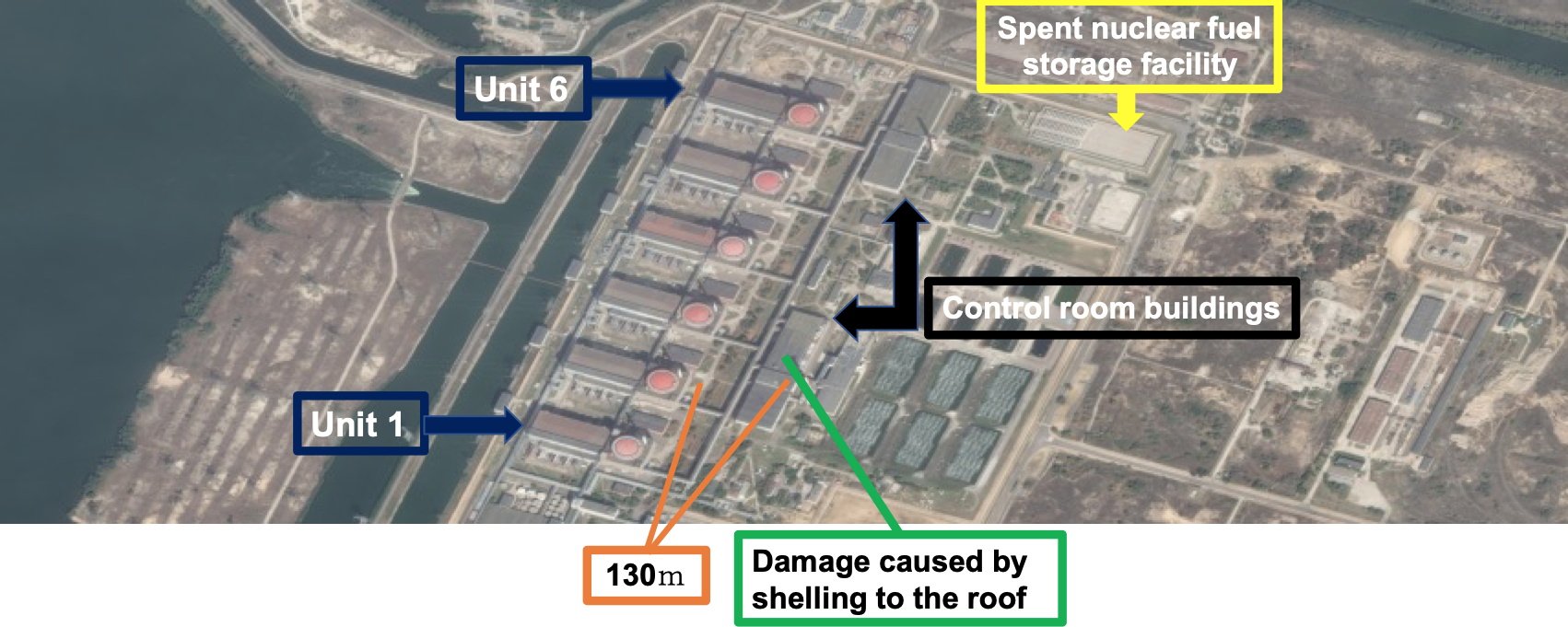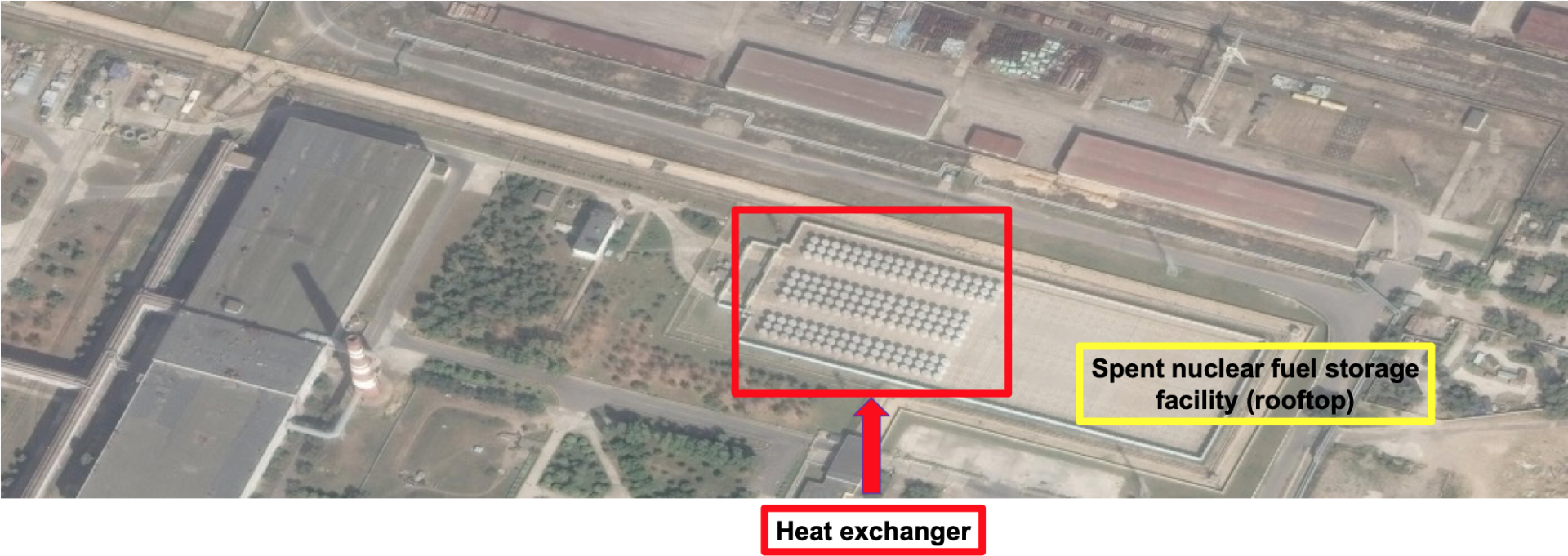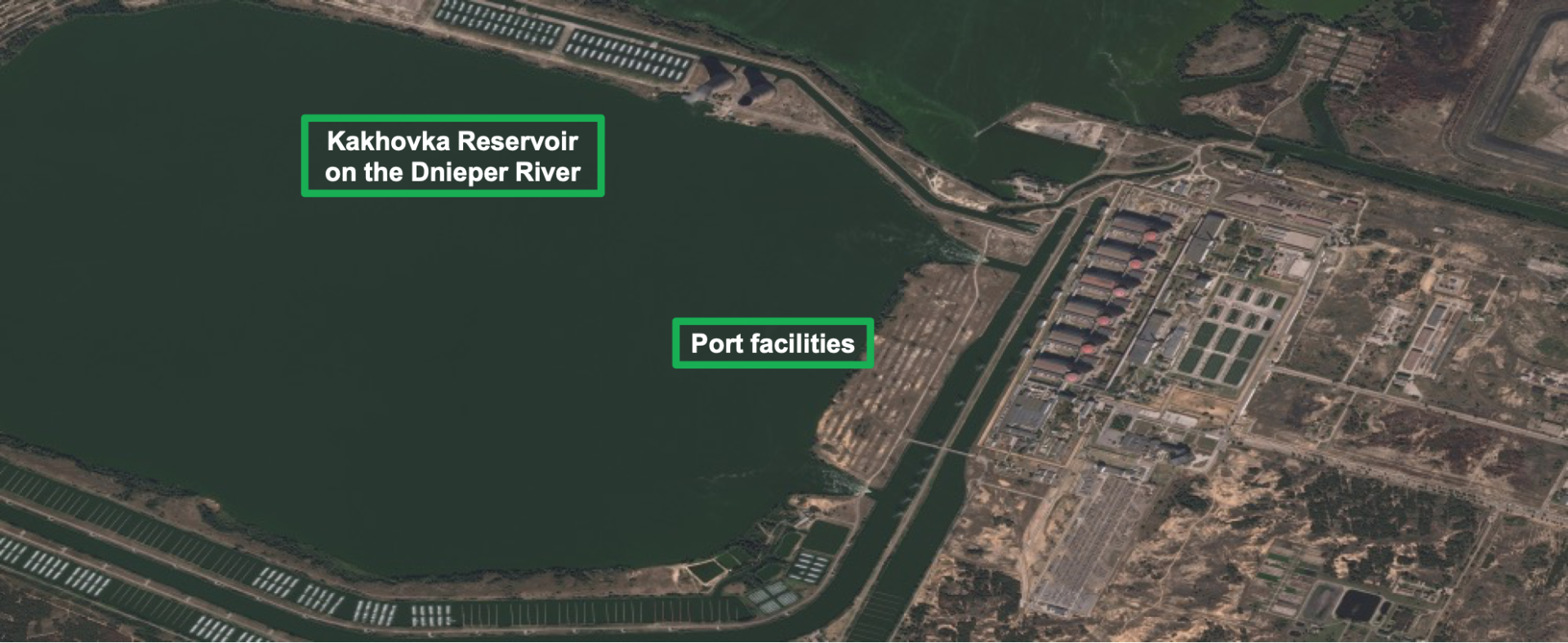Satellite Imagery Analysis 2022/10/12
Current State of the Zaporizhzhia Nuclear Power Plant and Concerns Going Forward
Yuki Kobayashi (Research Fellow, Sasakawa Peace Foundation)
The situation surrounding the Zaporizhzhia nuclear power plant (NPP) is becoming increasingly tense. The largest nuclear power plant in Europe, it is located in the southeastern part of Ukraine and is currently occupied by Russian troops. Since August 2022, it has been subjected to repeated shelling, which Ukraine and Russia accuse each other of perpetrating. In September, a team of inspectors including Rafael Mariano Grossi, Director General of the International Atomic Energy Agency (IAEA), visited the site and assessed the safety of the nuclear plant[1]. Two IAEA staff members have since been stationed there on a permanent basis, but shelling has continued. While counterattacks by Ukrainian forces are being reported, Russian troops are turning the nuclear power plant into a military base. Although they are firing rockets at the Ukranian forces from the Zaporizhzhia NPP site, there is little likelihood of the Russians facing a full-fledged counteroffensive, because any damage to reactors or other facilities could cause a major radioactive release. In other words, Russia is stepping up its moves to use the Zaporizhzhia NPP as a “nuclear shield” against attacks from Ukrainian forces.
Amid growing concerns around the world, Sasakawa Peace Foundation (SPF) China Observer examined satellite images of the Zaporizhzhia NPP to assess the current state of the site and concerns going forward. More specifically, together with Tomonori Iwamoto, Director of the Institute of Nuclear Materials Management (INMM) Japan Chapter, we analyzed satellite images to determine the structure of the nuclear power plant and identified concerns for the future. Mr. Iwamoto has been involved in the inspection of suspected nuclear weapons development in Iran and Iraq as a member of an IAEA inspection team.
Satellite Image 1 below shows the Zaporizhzhia NPP as of September 3, 2022. The six red-roofed buildings shown slightly to the left of center in the image are reactor buildings (Units 1 through 6 from the lower bottom to the upper middle of the image). We can see that Zaporizhzhia is home to a major concentration of nuclear reactors. Although such a concentration of nuclear reactors is not uncommon in Japan, as seen at the Fukushima Daiichi Nuclear Power Station (with six reactors) and Kashiwazaki-Kariwa Nuclear Power Station (with seven reactors) operated by Tokyo Electric Power Co., Inc. (TEPCO), few nuclear power plants in Europe have five or more reactors. All six reactors at the Zaporizhzhia NPP are currently shut down in an effort to secure safety, with its last operating Unit (No.6) taken off the grid on September 11.

Satellite Image 1
All of the Zaporizhzhia reactors are Russian water-water energetic reactors, or VVERs in the Russian abbreviation. Pressurized hot water, heated with heat from nuclear fission inside the reactor, is injected into a steam generator to generate steam, which is then fed into a turbine to generate electricity. Developed by the former Soviet Union, early VVERs did not have containment buildings for protection, posing a risk that highly radioactive substances could be released into the environment in the event of a meltdown, as was the case in the Chernobyl accident. The VVERs at the Zaporizhzhia NPP are of the third generation and have containment buildings, achieving safety and security levels comparable to those of reactors in Western countries.
The six reactors at the Zaporizhzhia NPP are capable of generating 1,000 MWe each for a total output of 6,000 MWe. With a capacity exceeding the Fukushima Daiichi Nuclear Power Station (with six reactors and a total output of 4,696 MWe) the Zaporizhzhia NPP accounts for some 20% of total electricity supply in Ukraine. It is the largest NPP in Europe and the third largest in the world following the Kashiwazaki-Kariwa Nuclear Power Station (with seven reactors and a total output of 8,212 MWe) and one other.
Inside the two gray buildings immediately behind the six reactors (to the right of the reactors in the image) are central control rooms staffed by operators 24 hours a day to operate and monitor each reactor.
The whitish building in the upper part of the image is believed to be a storage facility for spent nuclear fuel. Satellite Image 2 below shows an enlarged view of the building. Shapes that appear to be heat exchangers (marked by the red square) can be observed on the top of the building. Mr. Iwamoto says this is probably where spent fuel rods are stored, assuming that the heat exchangers are being used to cool them.

Satellite Image 2
In analyzing those satellite images, we focused our attention on, and attempted to identify, the location of the crisis control center. All nuclear power plants are equipped with a radiation-shielded facility, called an “emergency response room” or a “crisis control center,” to cope with emergency situations such as reactor anomalies. At the Zaporizhzhia NPP, the IAEA inspection team was unable to access the crisis control center, which remains occupied by Russian troops. Together with Mr. Iwamoto, we analyzed satellite images that capture an overview of the Zaporizhzhia NPP, including Satellite Image 3 below and those contained in IAEA reports, but were unable to locate the crisis control center.

Satellite Image 3
In Satellite Image 3, another characteristic of nuclear power plants is observable. Since a huge amount of water is needed to cool reactors, the presence of abundant water resources nearby is essential. The Zaporizhzhia NPP is located on the shore of the Kakhovka Reservoir on the Dnieper River. When we look at the reservoir in Satellite Image 3, we can see piping systems to supply water to reactor buildings and extensive port facilities for receiving nuclear fuel and other shipments.
The Dnieper River, which originates in the Valdai Hills (at an altitude of 220 m) in northern Russia, runs through Belarus and across Ukraine—passing through its capital city of Kiev, Zaporizhzhia, and the southern part of the Kherson Oblast—before flowing into the Black Sea. It is a major river with a total length of approximately 2,290 km, and vast stretches of land along its basin are covered with fertile black soil. For this reason, the central and southern parts of Ukraine have been called the “Breadbasket of Europe” since the time of Czarist Russia. Today, Ukraine is the fifth largest wheat exporter in the world, making agriculture its main industry. According to data for 2019 and 2020 from the State Statistics Services of Ukraine, crops account for 19% of the country’s total exports (which are worth about 49.2 billion dollars).
Ironically, an aspect of this fact serves to increase the value of the Zaporizhzhia NPP as a “nuclear shield.” In the event of a massive discharge of radioactive substances, the damage would have an immeasurable impact on global food security. Moreover, should this happen, radioactive contamination would spread into Russian-controlled Crimea as well as wide areas across Europe. Energoatom, the Ukrainian state enterprise operating the Zaporizhzhia NPP, has already published projections on the possible spread of radioactive substances[2].
Potential causes that could lead to such a disaster include damage to power cables and resulting control room inoperability and/or loss of the reactor cooling function. When the reactor cooling function is disabled, the temperature and pressure inside the reactor rise to abnormal levels as nuclear fuel rods begin to melt, rupturing the reactor itself and the containment vessel protecting it. Furthermore, a large amount of hydrogen gas is generated in the meltdown process. The gas is released from the reactor and accumulates inside the building housing the reactor and reactor vessel, causing an explosion and hence a massive discharge of radioactive substances into the environment.
Satellite Image 1 reveals another point of concern. The IAEA inspection confirmed damage caused by shelling to the roof of a building believed to house a central control room, as indicated in green in the image. The building is only 130 m away from the Unit 2 reactor building, indicating that the Zaporizhzhia NPP is in grave peril.
Proper management of spent fuel is also of critical importance. Unlike reactors, which are made of high-strength steel and individually protected by containment vessels so as to withstand even the impact of an intentional plane crash, the spent fuel storage facility shown in Satellite Image 2 is vulnerable to external attacks. If exposed to the atmosphere, the spent fuel stored inside the building will generate radiation.
Although all reactors at the Zaporizhzhia NPP are currently shut down, this does not mean that safety is secured. Even after reactors are turned off, they need continual cooling as nuclear fuel continues to generate enormous heat. When nuclear fuel rods begin to melt, things develop quickly, and crises cascade with one triggering another. In the case of the Fukushima Daiichi accident, a sequence of events—an explosion at the Unit 1 reactor building, another at the Unit 3 reactor building, damage to the containment vessel for the Unit 2 reactor, and an explosion and fire at the Unit 4 spent fuel pool—occurred in a space of five days after the devastating earthquake and tsunami hit the nuclear power plant. Following the explosion and fire at the Unit 4 spent fuel pool, the Japanese government assumed the possibility that eastern Japan could become mostly inhabitable in the worst-case scenario[3].
In the light of all these circumstances and prospects, the IAEA is currently consulting with both Russia and Ukraine to establish a “safety and security zone” at the Zaporizhzhia NPP and in its vicinity. Amid reports of Ukrainian forces deploying troops on the bank of the Dnieper opposite the plant in a counteroffensive, I sincerely hope that the two countries recognize the magnitude of potential threats posed by nuclear power and avoid a situation that would cause a far-reaching impact across the region including neighboring countries.
1 IAEA “Nuclear Safety, Security and Safeguards in Ukraine: 2nd Summary Report”
3 “Fukushima Daiichi Genshiryoku Hatsudensho no Fusoku Jitai Shinario no Sobyo” [A sketch of contingency scenarios for the Fukushima Daiichi Nuclear Power Station], a 15-page PowerPoint document prepared by Shunsuke Kondo, then Chairman of the Japan Atomic Energy Commission, at the request of the Cabinet of then Prime Minister Naoto Kan. The document was submitted to the Cabinet on March 25, 2011, two weeks after the accident. Although the Cabinet did not make the document public, the author obtained a copy independently.





